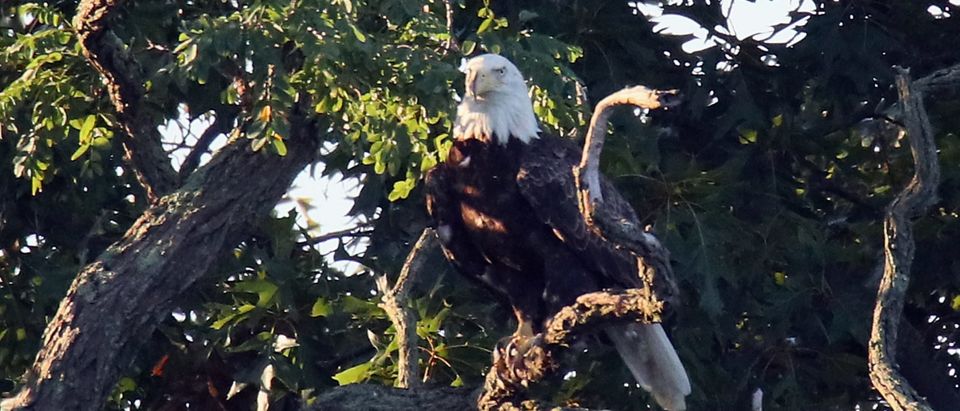Lead poisoning poses a serious threat to the growth of the American bald eagle population, a Thursday study from the journal Science found.
Lead levels have been increasing since the Industrial Revolution, which has had negative effects on both humans and animals, according to the study. Bald eagles in particular are facing a threat to their population growth from lead poisoning, with 46 to 47% of bald and golden eagles examined showing signs of chronic lead poisoning, the study found.
3/4
The bowed head, drooped wings, and green stained tail feathers of the bald eagle below are all typical signs of lead poisoning of raptors.News release: https://t.co/kzzBSID2tU
Picture: https://t.co/1qgSCnyTst pic.twitter.com/ZFFi4W3kws— USGS in Oregon (@USGS_OR) February 17, 2022
Additionally, 27 to 33% of bald eagles examined showed signs of acute lead poisoning, the researchers found by measuring their blood, livers and feathers. The level of lead poisoning found in the birds could hold back the population growth rate of bald eagles by as much as 3.8%, according to the study.
The study examined a total of 1,210 bald and golden eagles, 620 of which were alive, from 38 states across the U.S. (RELATED: Bald Eagles In America Found Doing Something For First Time In Decades)
Cornell University wildlife disease ecologist Krysten Schuler, who was not involved in the research, pointed out that “a lead fragment the size of a grain of rice is enough to kill an eagle,” according to the Wall Street Journal. “This is an anthropogenic source of mortality for eagles,” Schuler continued, the outlet reported.
Eagles will scavenge animal carcasses for food, including those of game shot and left behind by hunters, the WSJ reported. Lead in the ammunition used to kill the animal an eagle is scavenging could cause an increase in the lead levels in the eagle’s system, according to the outlet.
Bald eagles were taken off of the Endangered Species list in 2007, with about 316,000 living in the continental U.S., according to the WSJ. The bald eagle species is still seeing a 10% growth rate annually, indicating that the 3.8% rate decrease is less detrimental when compared that of to golden eagles, the outlet reported.
Conservation Science Global research wildlife biologist Vince Slabe, who co-authored the study, said golden eagles “are not obviously increasing by any means, so any level of population suppression in that species is alarming,” according to the WSJ. The level of lead poisoning found in the golden eagles could stunt the population growth rate for the species by 0.8%, the new study found.


